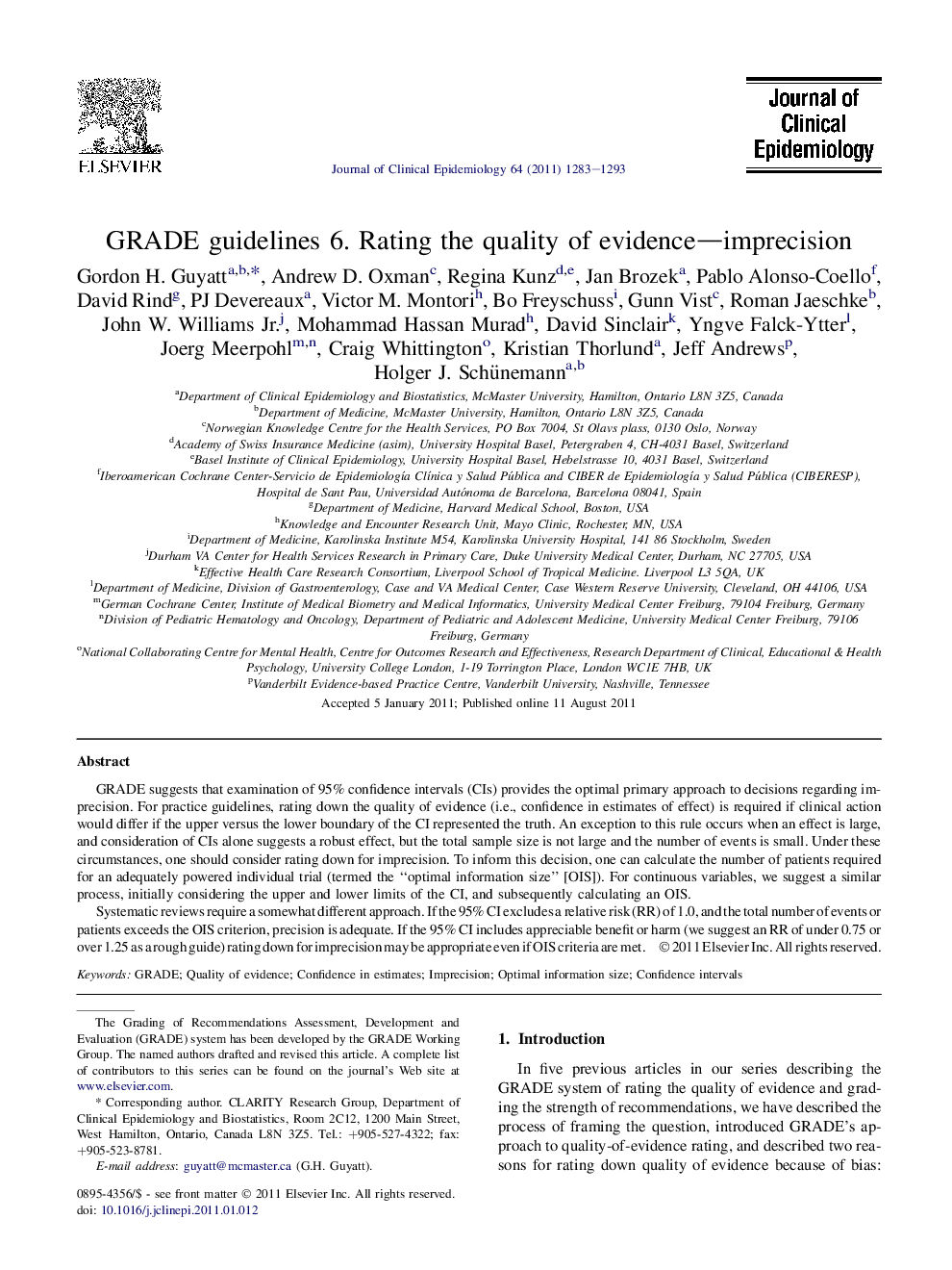| کد مقاله | کد نشریه | سال انتشار | مقاله انگلیسی | نسخه تمام متن |
|---|---|---|---|---|
| 1082977 | 950978 | 2011 | 11 صفحه PDF | دانلود رایگان |

GRADE suggests that examination of 95% confidence intervals (CIs) provides the optimal primary approach to decisions regarding imprecision. For practice guidelines, rating down the quality of evidence (i.e., confidence in estimates of effect) is required if clinical action would differ if the upper versus the lower boundary of the CI represented the truth. An exception to this rule occurs when an effect is large, and consideration of CIs alone suggests a robust effect, but the total sample size is not large and the number of events is small. Under these circumstances, one should consider rating down for imprecision. To inform this decision, one can calculate the number of patients required for an adequately powered individual trial (termed the “optimal information size” [OIS]). For continuous variables, we suggest a similar process, initially considering the upper and lower limits of the CI, and subsequently calculating an OIS.Systematic reviews require a somewhat different approach. If the 95% CI excludes a relative risk (RR) of 1.0, and the total number of events or patients exceeds the OIS criterion, precision is adequate. If the 95% CI includes appreciable benefit or harm (we suggest an RR of under 0.75 or over 1.25 as a rough guide) rating down for imprecision may be appropriate even if OIS criteria are met.
Journal: Journal of Clinical Epidemiology - Volume 64, Issue 12, December 2011, Pages 1283–1293